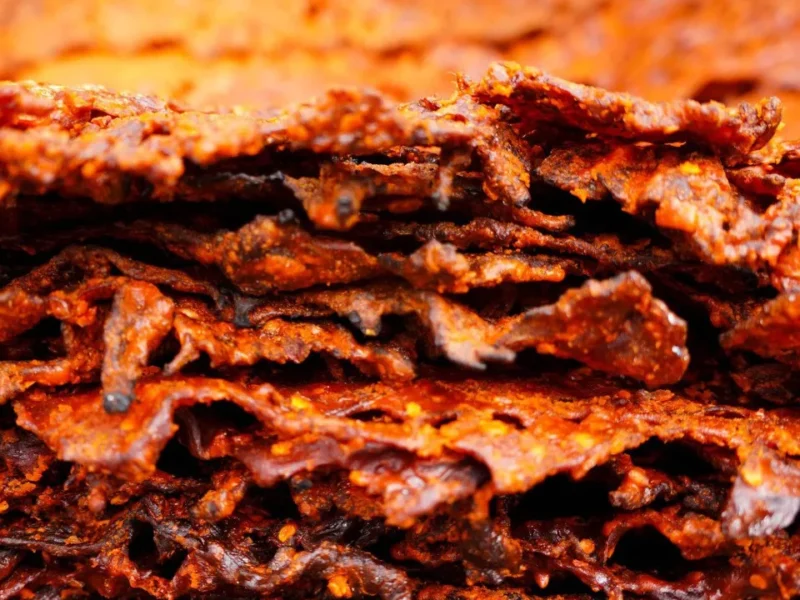Introduction: Nigeria’s culinary landscape is rich with flavorful delights, and among the most beloved is suya, a tantalizing street food sensation. Suya is not just food; it’s an experience, a tradition that brings people together, ignites the senses, and celebrates the essence of Nigerian culture. In this exploration, we delve deep into the world of suya, uncovering its origins, ingredients, preparation techniques, cultural significance, and the joy it brings to countless taste buds across the nation.

Section 1: Origins and Evolution of Suya 1.1. Historical Roots:
- Suya has its origins in the northern regions of Nigeria, particularly among the Hausa people, who are credited with its creation.
- Historically, suya was prepared by nomadic Fulani herders who seasoned meat with locally available spices and grilled it over open flames during long journeys.
1.2. Spread and Adaptation:
- Over time, suya spread beyond its northern origins and became a popular street food across Nigeria, evolving to incorporate various regional influences and preferences.
- Today, suya is enjoyed nationwide and has even gained recognition internationally, thanks to the Nigerian diaspora.
Section 2: The Anatomy of Suya 2.1. Meat Selection:
- Beef is the most common meat used in suya, prized for its flavor and tenderness, but other options include chicken, goat, and offal.
- Vendors carefully select cuts with a good balance of lean meat and fat, such as sirloin or flank, ensuring optimal taste and texture.
2.2. Spicy Peanut Marinade:
- The hallmark of suya lies in its marinade, a flavorful blend of ground peanuts (or peanut butter), spices, and seasonings.
- Common ingredients in the marinade include groundnut cake (kulikuli), cayenne pepper, ginger, garlic, onion powder, and bouillon cubes, all mixed with vegetable oil to form a thick paste.
2.3. Skewering and Grilling:
- Once marinated, the meat is threaded onto skewers, interspersed with slices of onions and sometimes vegetables like bell peppers or tomatoes.
- The skewers are then grilled over an open flame or charcoal, resulting in tender, juicy meat with a smoky, caramelized exterior.
Section 3: Flavor Explosion: The Taste of Suya 3.1. Spicy Sensation:
- Suya packs a punch of flavor, with its spicy, savory, and nutty notes tantalizing the taste buds.
- The combination of chili heat from cayenne pepper, richness from peanuts, and depth from spices creates a symphony of flavors that is both addictive and unforgettable.
3.2. Customization and Variation:
- While the classic suya recipe remains popular, there is room for experimentation and customization.
- Vendors may offer variations such as extra spicy suya, suya with different meats or cuts, or even vegetarian options featuring tofu or mushrooms.
Section 4: The Social and Cultural Significance of Suya 4.1. Communal Dining:
- Suya is more than just food; it’s a social ritual that brings communities together.
- Whether enjoyed at bustling street corners, neighborhood joints, or roadside stalls, suya creates opportunities for people to connect, converse, and share in the joy of good food.
4.2. Celebration and Festivity:
- Suya is a staple at celebrations, festivals, and gatherings of all kinds, from weddings and birthdays to religious holidays and sporting events.
- Its presence symbolizes festivity, abundance, and the spirit of hospitality that is ingrained in Nigerian culture.
Section 5: Health Considerations and Nutritional Value 5.1. Balanced Nutrition:
- While suya is a flavorful indulgence, it can also be part of a balanced diet when enjoyed in moderation.
- Lean cuts of meat provide protein for muscle growth and repair, while the marinade’s peanut base offers healthy fats and essential nutrients.
5.2. Mindful Choices:
- To optimize the nutritional value of suya, consider pairing it with fresh vegetables or whole grains and moderating portion sizes.
- Additionally, opting for leaner cuts of meat and minimizing added fats in the marinade can help keep calorie and fat intake in check.
Conclusion: In conclusion, suya is more than just a street food; it’s a cultural icon, a culinary masterpiece, and a testament to the vibrancy of Nigerian cuisine. From its humble beginnings in the northern regions to its widespread popularity across the country, suya embodies the spirit of innovation, community, and culinary excellence. So, the next time you bite into a skewer of succulent, spicy meat, take a moment to savor the flavors, appreciate the tradition, and celebrate the magic of suya.










